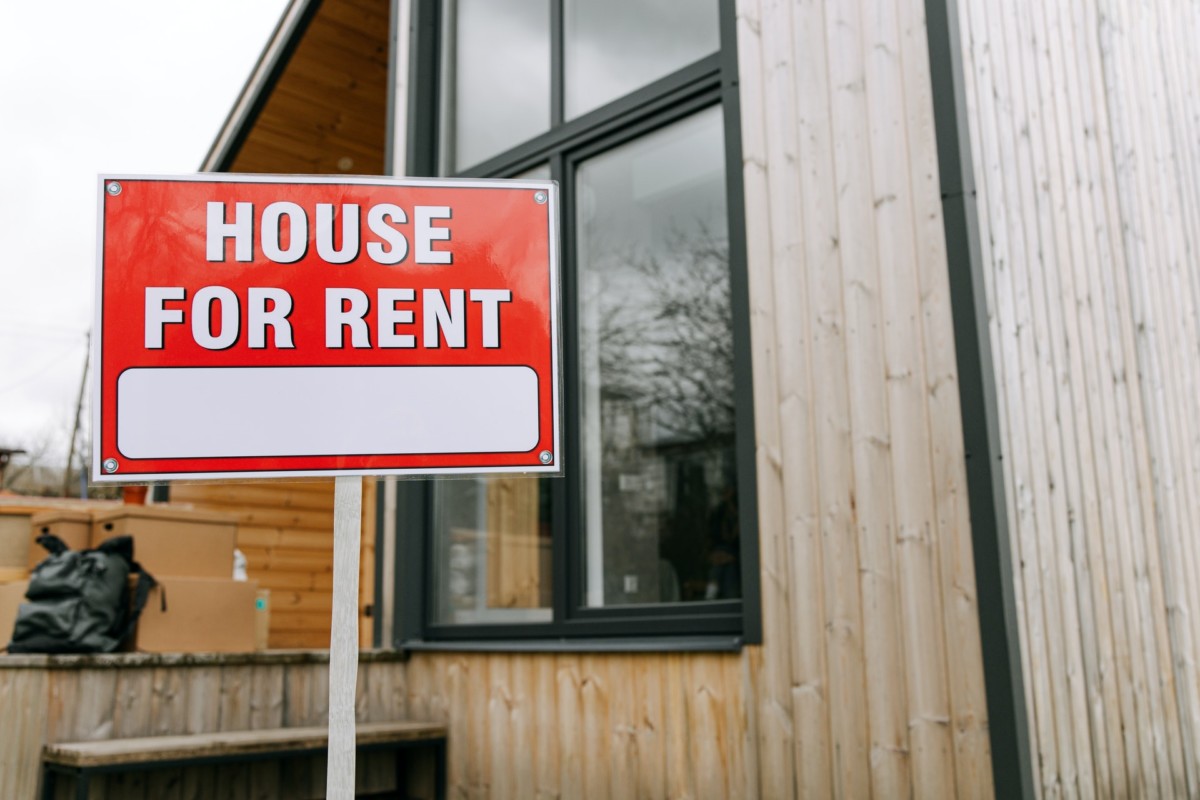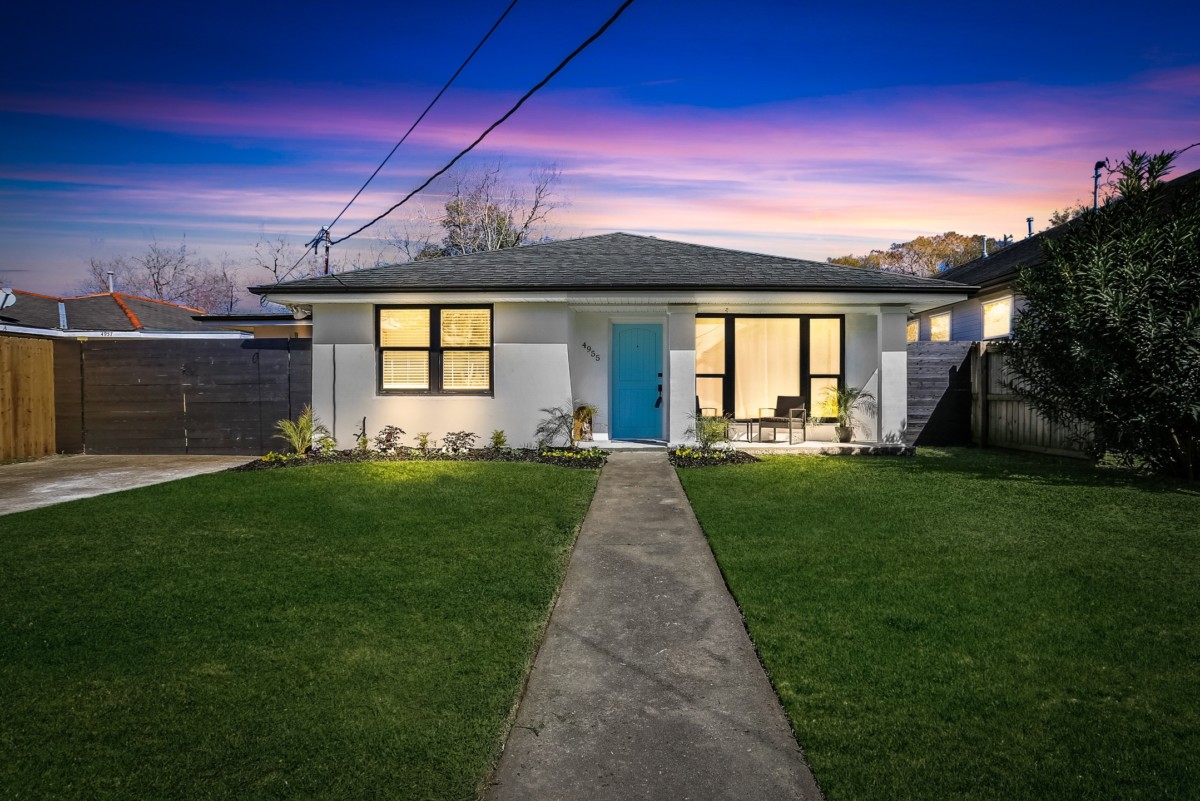Investing in residential real estate and renting it to tenants can be a great way to own assets that create passive income and may gain value over time. But becoming a landlord takes plenty of planning, investment, and patience.
How does someone actually become a landlord? There are a lot of expenses to account for and variables to consider. Follow these steps and you’ll be well on your way to landlord life.
1. Make sure you can lease property in the area
Many homes sit in a community governed by a homeowner’s association (HOA). HOAs often restrict the number of rental properties in a community, how long tenants can stay, and how many tenant turnovers are allowed in a calendar year. They can also enforce specific terms of the lease.
Let’s say an HOA decides to place a 30% rental cap on their community. If 30% of the homes are already rented to tenants, no new renters will be allowed. New landlords are out of luck until an existing renter leaves.
Make this the first thing you check when you consider rental homes in areas within an HOA.

2. Get familiar with state and local landlord-tenant laws
Landlord-tenant laws vary from state to state. These regulations outline the rights and responsibilities of both the landlord and the tenant. Landlord-tenant laws usually cover things like:
- Lease agreement limitations
- Rent payment and increases
- Security deposits
- Repairs
- Health and safety concerns
- Evictions
You’ll also need to be familiar with the Fair Housing Act and comply with it. This federal law “prohibits discrimination in the sale, rental, and financing of dwellings, and in other housing-related transactions, because of race, color, religion, sex (including gender identity, and sexual orientation), familial status, national origin, and disability.”
Some states also have additional Fair Housing laws. Violating any of these regulations can lead to significant penalties.
3. Apply for a rental license (if your state requires them)
A rental license is like a driver’s license for landlords. It legally allows you to operate a property as a rental. But unlike driver’s licenses, rental licenses aren’t required in all states.
You’ll need to complete an application if they’re required in your state. They’re usually found on your local department of housing website.
You’ll typically pay a fee and set up a home inspection. The inspection verifies that the property meets all safety requirements and is in rentable condition. The inspector will:
- Check plumbing, electrical, and HVAC systems
- Make sure smoke detectors work
- Look for obvious health issues like water staining or mold in the rental
- Check home features like windows, appliances, and garage doors to make sure they work
If the property has any building code violations, it’s usually a good idea to hire a licensed contractor for the repairs. After the work is done, you’ll need to have the property re-inspected before getting your license.
4. Find and buy your rental property
Are you considering a single-family home, condo, townhouse, or something else? Each kind of property can come with its own regulations, maintenance demands, repair risks, and profit potential.
As a landlord, you’ll probably finance your purchase differently than you would if you were buying it as your primary residence. Mortgage lenders often require a larger down payment for a rental property since they see a loan with a higher risk of default. Depending on the market and lender, you may need a 15%, 20%, or 25% down payment to purchase the rental property.
Some people choose to create a limited liability company (LLC) for their rental business. This can separate their assets and reduce risk. LLCs are considered “pass-through” entities, meaning LLC members can claim their profits and losses on their tax returns.
It can help to understand the three property classes before considering specific homes. Each can affect a landlord’s decision differently. They’re easy to remember: A, B, and C.
Class A
Class A properties are generally newer properties built within the last 15 years. Its design and features tend to be more modern. It could have granite countertops, in-style kitchen cabinets, or newer appliances.
For these reasons, Class A properties usually have lower vacancy rates and are often professionally managed.
Many Class A properties can demand higher rents and require less maintenance, at least in the short term. But they’ll also cost more to purchase upfront.
Class B
Class B properties are a little older than Class A properties. Average rental income isn’t usually as high as Class A, and there could be a higher risk of maintenance issues.
Many buyers see Class B properties as “value-add” investment opportunities because you can upgrade them and charge higher rent. They can be lucrative for buyers, especially if they have good contractor connections or know how to renovate homes themselves.
Class C
Class C properties are usually more than 20 years old. These properties are more likely to need updates or repairs to keep everything up to code, or in line with newer properties in the area. On average, they may rent for less than Class A or B properties. They may also require a little more budget space for future repairs.

5. Create a budget
Create a budget that includes both expected and unexpected costs. Typical landlord expenses can include:
- Landlord insurance
- Vacancy time
- Maintenance and repair costs
- Upgrades or improvements
- Certain utility costs
- Rental licenses, annual registration fees, and mandatory inspections
- Property and rental income tax
- HOA fees
- Mortgage payments
- Marketing
You may also want to budget for:
- Property management fees, if you hire a property manager
- Bookkeeping or accounting fees, if needed
- Legal fees for lease review and potential evictions
6. Buy landlord insurance
Landlord insurance protects you and your property from certain losses and accidents. Insurance also protects your financial assets if there’s a liability claim.
Landlord insurance typically covers:
- Medical expenses associated with incidents that take place on your property
- Certain aspects of the property’s structure
- Lost rental income if the property is vacant during repairs
- Legal costs associated with incidents that take place on your property
7. Come up with an eviction plan
Each state has specific laws that regulate the eviction process. They cover the timeframes and required notices you’ll need to follow to legally evict a tenant. It helps to understand these laws in detail in case you ever need to use them. There are two types of eviction:
Eviction without cause
If you have a tenant on a month-to-month lease, you can usually serve a notice to vacate without needing a reason. You’ll need to give the tenant 30 or 60 days’ notice in many areas.
Eviction with cause
This means you’re evicting the tenant because they violated (or are currently violating) the lease. Common reasons include:
- Failing to pay rent
- Violating city, state, or HOA ordinances
- Creating health or safety issues for themselves or others
- Damaging the property
- Failing to meet other requirements in the lease agreement
Even if you have cause to evict, you’ll still need to follow landlord-tenant laws where the property is located. These specify the timeframes and documentation required to legally evict someone.
If you need to go to court and the judgment goes in your favor, your tenants will have a set time to leave, usually within 15–30 days. If they don’t leave voluntarily, you can file a writ of possession, which allows a law enforcement officer to escort them off the property. The landlord-tenant law in your state will specify what you can and can’t do with any belongings the tenant leaves behind.

8. Decide whether to hire a property manager
You can hire a property manager to manage certain aspects of rental management, including most maintenance, advertising, and tenant communication.
Most full-service property management companies charge around 10% of your gross rent. They may handle:
- Rental property showings
- Lease negotiations and signings
- Collecting rent
- Tenant communication
- Contracting and scheduling repairs
- Evictions
- Facilitating tenant move-outs
- Inspection to determine conditions and rentability for the next tenant
- Coordinating repairs after move-out
You can also hire a property management company on a per-task basis. For example, you can ask that they only handle showings and lease signings while you handle everything else. Per-task costs generally range from $100–$150 each, but this varies based on the task.
Many landlords find that hiring a property manager frees up their schedule to focus on a full-time job, different investments, or any other activity.
9. Complete all home repairs and updates
Your rental needs to be safe and livable, and everything should be in working condition for the tenant. Make any needed repairs before the tenant moves in. Fix things like broken fixtures, malfunctioning appliances, and stubborn water leaks (even the little ones).
Give the interior and exterior a thorough cleaning. Not only does a clean property look nice during showings, but it also sets the expectation of cleanliness from future tenants.
This pre-tenant period can be a great time to install new cabinets or flooring if it’s within your budget. If a tenant hasn’t signed a lease yet, you may be able to charge more for rent once you’ve made attractive updates to the property.
10. Arrange contractors for future projects or repairs
Having a team of reliable home-improvement professionals on your side ensures all maintenance, update, and repairs are done quickly and effectively. Research general contractors, plumbers, and electricians in the area to have on-call for repairs. Speak with licensed professionals to ensure your property is compliant with local building codes.
As a landlord, you’ll want to complete repairs within a reasonable amount of time. How long a landlord has to fix something varies based on the type of repair and local landlord-tenant laws.
If you’re working with a property management company, they may have a department that handles repairs for their properties. They might charge more for this service, but it’s good to know they’re available if you need them.
Here’s how you can find the right professional to help you with rental maintenance and improvements:
Look for someone with a solid reputation: Check online review sites. Ask coworkers, family, and friends if they have anyone they like and recommend.
Check references: Referrals are great, but it can also help to call the people contractors have worked with in the past. Contact references to get an idea of what it’ll be like to work with each professional.
Be specific about your project: If you need an on-call electrician, avoid settling for a general handyperson. A licensed electrician will do the job safely and correctly.
Get multiple bids: A standard rule of thumb is to get three estimates before deciding who to hire. This encourages competition for your business and gives insight into how people value themselves.
Watch out for red flags: Many landlords avoid contractors who require payment upfront or insist on cash payment. Be extra diligent when contractors don’t have an online presence. Even a Better Business Bureau (BBB) listing or a handful of online reviews are a start.

11. Make sure the home meets state property code
Building codes vary by state. A 3-foot-tall stairway railing in one state may need to be four feet tall in another state. It’s up to you as a landlord to determine what’s required by law. If you have an attorney, they can help translate confusing legalese into everyday language that’s easy to understand.
A property inspection can identify issues with wiring, lighting fixtures, electrical outlets, roofs, HVAC systems, or plumbing. All windows and doors should close and lock for safety. If not, make sure they’re repaired to meet local property codes.
Safety regulations usually require smoke and fire alarms, fire extinguishers, and carbon monoxide detectors inside the property.
If your rental violates local housing codes, failing to make necessary repairs or upgrades can have costly consequences. For example, landlords of rental homes in Philadelphia, PA can be fined up to $300 each day the property isn’t licensed, according to The Pew Charitable Trusts.
12. Set your rent
You’ll want to set a reasonable rent that lines up with the current market. If the rent is too high, potential tenants won’t apply. If it’s too low, you’ll make less than landlords of similar properties in the area.
Start with an online search for rental homes in your area. Look at similar rentals and note the monthly rent for each one. Take note of each home’s location and features to find the ones most like your property.
You can also use an online rental estimate tool to get a rough idea. Just make sure your results are comparable to similar properties in the area.
When you set rent, consider property taxes, association fees, potential repair expenses, and anything else that could cost you in the short or long term.
13. Create the lease agreement
A lease agreement lays out your expectations in writing. It protects you and your tenants, and keeps everyone on the same page.
All lease agreements tend to have a similar format. As a landlord, you can include the terms as you see fit. For example, if you want to specify no smoking, no pets, and only one vehicle parked at the property, you can do it in the lease agreement.
Include tenant specifics
Your lease agreement should include the names of all tenants over 18, phone numbers, email addresses, and a mailing address where they can receive important notices about the property. It should also include information about other occupants, such as dependent children.
List specific property details
Include the property’s street address, suite, or unit number. List any defects, like a faulty furnace, and when you’ll repair it. List any fixtures, appliances, or furniture that need to stay once the tenant moves. You should also disclose if the property is part of an HOA and how that affects the tenant.
Specify tenant and landlord responsibilities
Outline each party’s responsibilities regarding payment for services like:
- Electricity
- Natural gas
- Water and sewer service
- Internet, cable, and landline phone services
- Trash collection
- Landscaping
- Heating oil
- Snow removal
Specify which will be the tenant’s responsibility, when payment is due, and how they can pay for the service. Tenants will also need to comply with the responsibilities listed in the lease agreement, which might include:
- Using the property for residential purposes only
- Not disturbing other tenants
- Ensuring only people listed in the lease live on the property
- Following all rules and regulations specified in the lease
- Setting up specified utilities before their start date
- Notifying the landlord of any necessary repairs
- Keeping the rental property in a safe, clean, and sanitary condition
Landlords need to comply with their responsibilities too. These might include:
- Making required repairs on time following receipt of notice
- Maintaining the property and common areas
- Providing 24-hour notice when they want to enter the property and never entering without the tenant’s permission (except in emergencies)
- Providing the services or utilities required by law or specified in the lease
- Not interfering with the tenant’s privacy and enjoyment of the rental property
Lay out the lease terms
Leases vary in type and length. You’ll want to clearly state how long the lease lasts, how the tenant can renew, and what happens once the lease term runs out. If the lease expires after 12 months, does it continue month-to-month afterward?
You’ll also need to clarify what happens if a tenant breaks the lease, along with any conditions where you can legally terminate the lease.
The lease should always include clear policies about tenant actions that could violate the lease agreement and lead to eviction.
Include monthly rent and additional fees
The lease agreement is your governing document for the rental, and rent is an important detail. The lease specifies the monthly rent amount, when payment is due, and when it’s considered late. It should include details about any late fees associated with overdue payments. It will also clarify additional items like pet fees, utility charges, and the need for renter’s insurance.
Add instructions regarding how and where tenants should send rent payments. If you allow online payments, explain how to access the portal or online payment processor.
Last steps
A lease agreement is a powerful document that should be handled with care. Your process might look something like this:
- Create the lease agreement
- Have an attorney review the lease
- Have the tenant review the lease
- Have the tenant sign and date the lease
- Sign the lease yourself and give your tenant a copy of the fully executed lease
- Securely store your copy of the lease

14. Market the home
Market your property by posting ads, hosting open houses, and using other available methods to attract renters.
You can advertise your property to prospective renters using online listing sites. In addition to other details, basic listing information usually includes:
- Earliest date of availability
- Square footage of the home
- Number of bedrooms and bathrooms
- Any special features or amenities
- Photos of the property
To make a rental ad more attractive, highlight the home’s features and any tenant-favored upgrades or policies. For example, you could say your property is a modern, three-bedroom condo with waterfront views and pet-friendly policies. This instantly sets your property apart from others in the area.
And of course, don’t forget to include as many high-quality photos of the exterior and interior as possible.
15. Screen applicants
Create your standard procedure to screen people who apply for your rental home. Landlords often look at applicants’ credit scores, employment history, past renting history, references, and any other factors that can help them select a tenant.
Many landlords favor applicants who have:
- A healthy credit report: The average renter will want to aim for a minimum credit score of around 650. This can be higher or lower depending on the landlord, property, and rental market. A hot market could demand credit scores of 740 or higher, according to Rent.com.
- Steady income: Stable income history can indicate a responsible tenant in many cases. Most landlords look for prospective tenants who make at least three times the monthly rent. If you follow this rule for a property with $1,500 rent, you’ll look for a tenant with a consistent gross income of at least $4,500 per month.
- Favorable references: Past landlords should have positive things to say about the applicant. If you get less than ideal feedback, get your applicant’s side of the story. This can help you decide how much to weigh the negative remark.
- A history of on-time payments: Credit reports show how long applicants have had open lines of credit and how consistent their payments are. If there’s a gap in their credit history, talk to them about it.
- No prior evictions: If a potential tenant has a past eviction on their record, ask them about the circumstances. Getting a clear understanding of their situation can help you make the best decision.
Select your tenants and sign the lease
Once you approve a tenant’s application, review the lease agreement before sending it to the applicant. This gives you one last chance to make any changes and updates.
Review the finalized lease with them to clarify your expectations and answer any questions. Tenants can always request changes, but you aren’t obligated to accept them if you don’t want to.
At lease signing, you’ll collect all deposits and fees, along with the first month’s rent. You may decide to charge prorated rent if the lease starts in the middle of a billing period. Some landlords also collect the last month’s rent when state laws allow it.
16. Maintain the home
A well-maintained property protects your investment and keeps tenants happy. Once the lease term starts and your tenant moves in, you might need to tend to specific routine tasks throughout the year. These can include things like spraying for pests, cleaning gutters, servicing the HVAC, or seasonal cleanups around the property.
This is when the 50% rule often comes into play, and landlords set aside 50% of their monthly rental income for any expenses involved with the property. But certain rental markets will call for a little more flexibility with this rule.

Becoming a landlord has pros and cons
There can certainly be positives to landlord life, but there can be drawbacks too. Some might take months or even years to show up.
Pros of becoming a landlord
Owning rental properties can be financially rewarding when things work out in your favor. It can also have tax benefits, like deducting mortgage interest, insurance, operating expenses, and maintenance costs. You may also gain:
- Long-term financial security: Landlords can invest in real estate and use rental cash flow to repay the mortgage, if they have one. You can sell the property later and cash in on the investment if its value increases.
- Monthly income: Quality renters who pay rent on time equal consistent, passive income that can further boost your financial assets.
Cons of becoming a landlord
Rentals can tie up your funds. You’ll probably want to set aside a reserve account in case more extensive repairs or replacements pop up. You may also come across:
- Higher insurance premiums: Some tenants may not take care of a home as well as they would if they owned it. In some cases, neglect can result in big insurance claims, which raises your rates. You may also live in an area with a higher risk of flooding or other natural disasters. This could increase your overall rate or require separate insurance coverage.
- Higher taxes: The tax code for rental property changes from time to time. A qualified CPA can ensure you take appropriate steps to optimize your tax exposure.
- The cost of your time: You may be onsite regularly to discuss issues and fix problems. You might spend sizable portions of your day communicating with tenants or contractors. Property management companies can chip away at some of this time investment, but it comes at a cost.
Becoming a landlord may be a rewarding experience for many, but it can come with unexpected events and hefty expenses. The more you consider the pros and cons and plan for unforeseen events, the more prepared you’ll be for any future outcome.
Redfin does not provide legal, tax, or financial advice. This article is for informational purposes only and is not a substitute for professional advice from a licensed attorney, tax professional, or financial advisor.
The post How to Become a Landlord: A 16-Step Beginner’s Guide appeared first on Redfin | Real Estate Tips for Home Buying, Selling & More.
